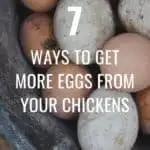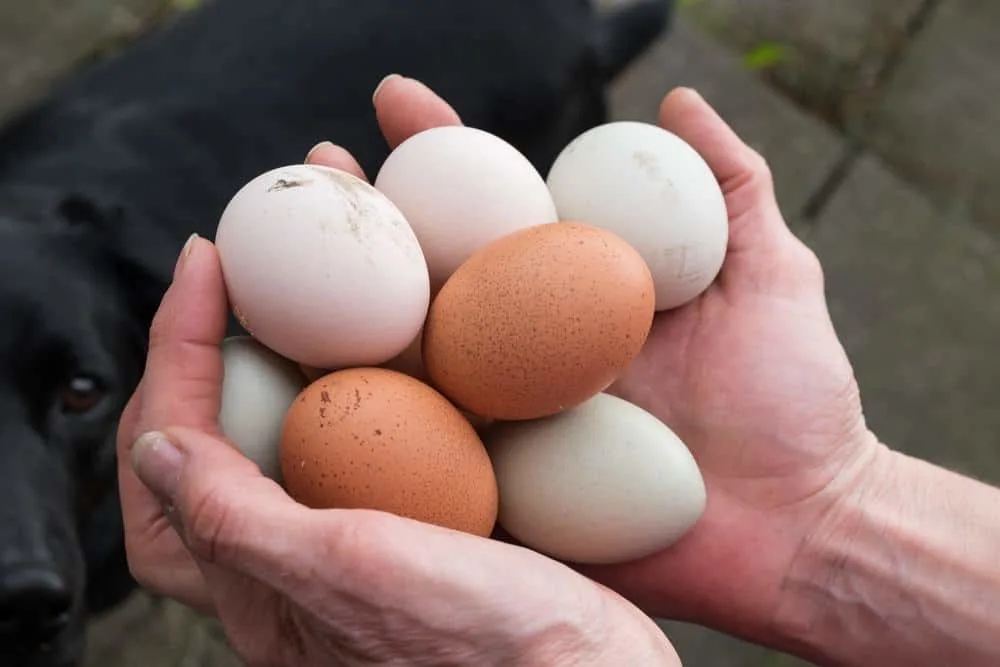
It’s that time of year when chickens suddenly go from producing an egg every day to one or two a week, or if you’re really unlucky, no eggs at all.
Chickens, like any animal, have natural biological rhythms that dictate their reproduction.
During the fall there are several factors that tend to trigger chicken’s bodies to take a break from laying eggs.
First we’ll go over what causes chickens to lay less eggs, and then steps you can take to improve your egg count.
1. Choose the right chicken breeds
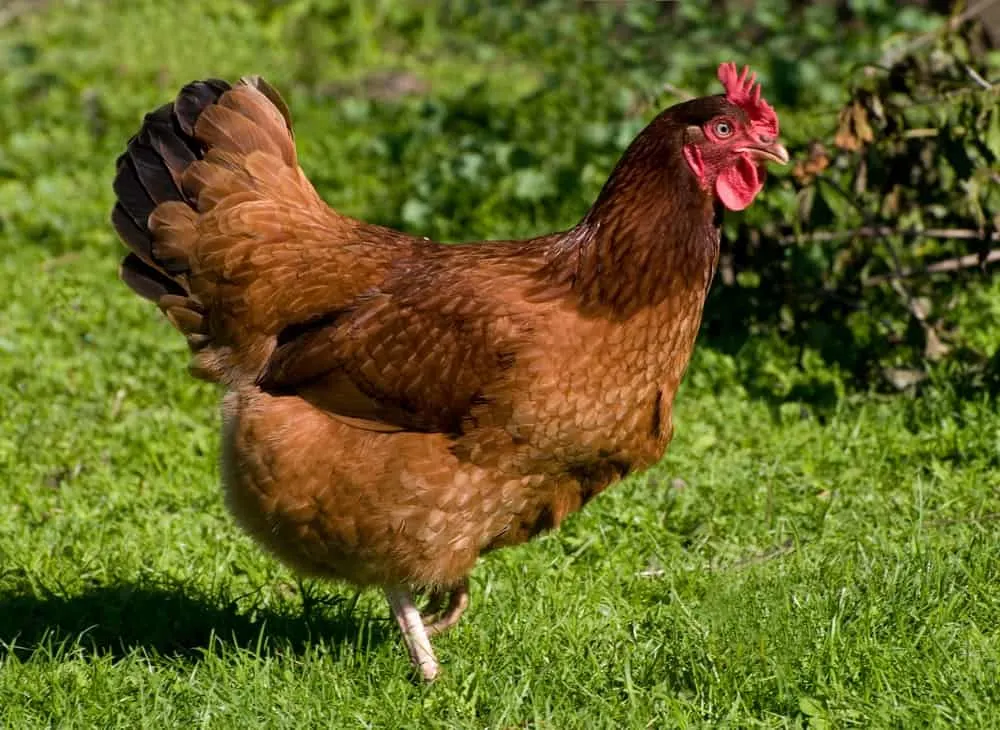
The very first step to ensuring you get lots of eggs from your chickens is to choose the right breeds to begin with.
Chickens come in many different breeds, and each has unique characteristics. Some breeds are well known for laying only a few eggs per month, while other champion breeds will lay every day.
Some breeds also tend to go broody frequently, which means they’ll try to hatch the eggs that they lay. While hens are broody they don’t lay any eggs, and broodiness can last for months!
Top chicken breeds for lots of eggs:
- Leghorn
- Production Red
- Australorp
- Rhode Island Red
- Golden Comet
- Plymouth Rock
- Sussex
2. Help them through their molt
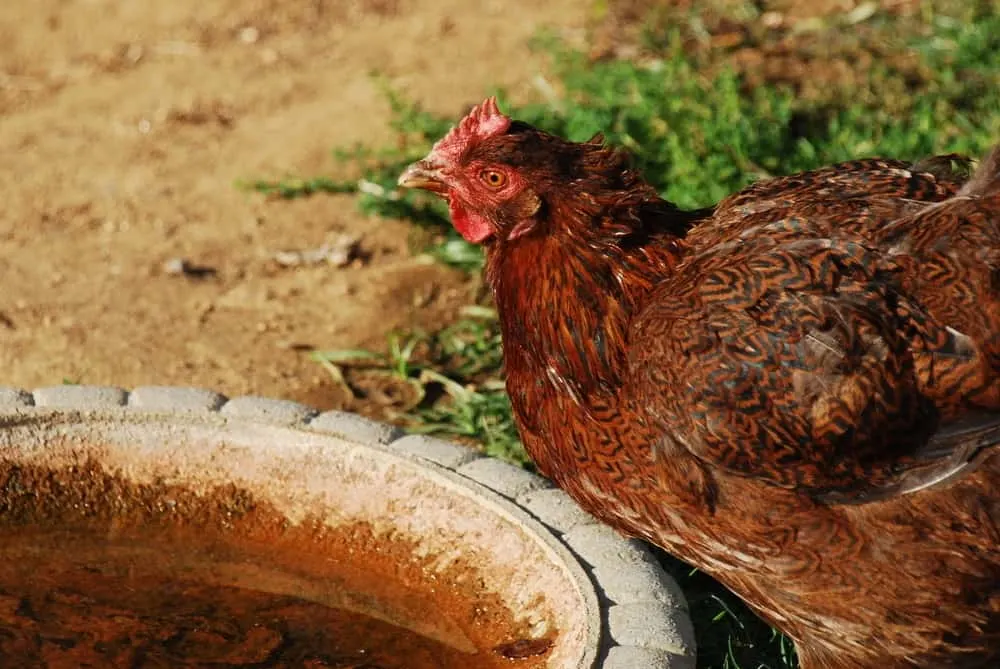
Most chickens go through a molt in the fall.
Molting is where chickens release old feathers and grow new ones. Molting can be a tough process for your chickens as it can be painful and takes a lot of energy to grow new feathers.
While chickens molt, they usually stop laying eggs. The energy that their body was spending on making eggs is now going to growing feathers.
While molting can be frustrating for the chicken keeper, there’s not a whole lot you can do to get your chickens laying again, except to help them through the molt as quickly and comfortably as possible.
Providing a dust bath for your chickens will help them to quickly dispose of old feathers while they roll around in the dirt. Here’s a tutorial for making your own chicken dust bath.
Supplying the chickens with ample protein during a molt will help them to grow new feathers more quickly, which means they can get back to laying sooner.
To add more protein to your flock’s diet you can switch to a high protein chicken feed or supplement with high protein treats. We like to give our hens dried mealworms and grubs during their molt so they bounce back quickly.
3. Add supplemental light in the coop

The hens laying cycle is directly affected by daylight. Most chickens will lay eggs consistently when there are 14 or more hours of light in a day. When fall begins and the daylight hours wane, chicken egg production takes a nosedive.
You can combat this phenomenon by adding supplemental light in the chicken coop. This practice is highly controversial in the chicken keeping community. The benefits are that your hens will lay more eggs through the winter.
There are downsides, however. Hens only have a certain number of eggs in them, and once they’ve laid them all, there are no more. Adding supplemental light in the winter will likely force the hens to use their egg reserves more quickly, which means they’ll lay for a shorter amount of time.
Many chicken keepers also believe that hens deserve a break from laying in the winter, and allowing them to follow their natural biological rhythms makes for happier, healthier birds.
If you’d like to try supplemental lighting in the chicken coop, follow these best practices.
4. Deal with broody hens
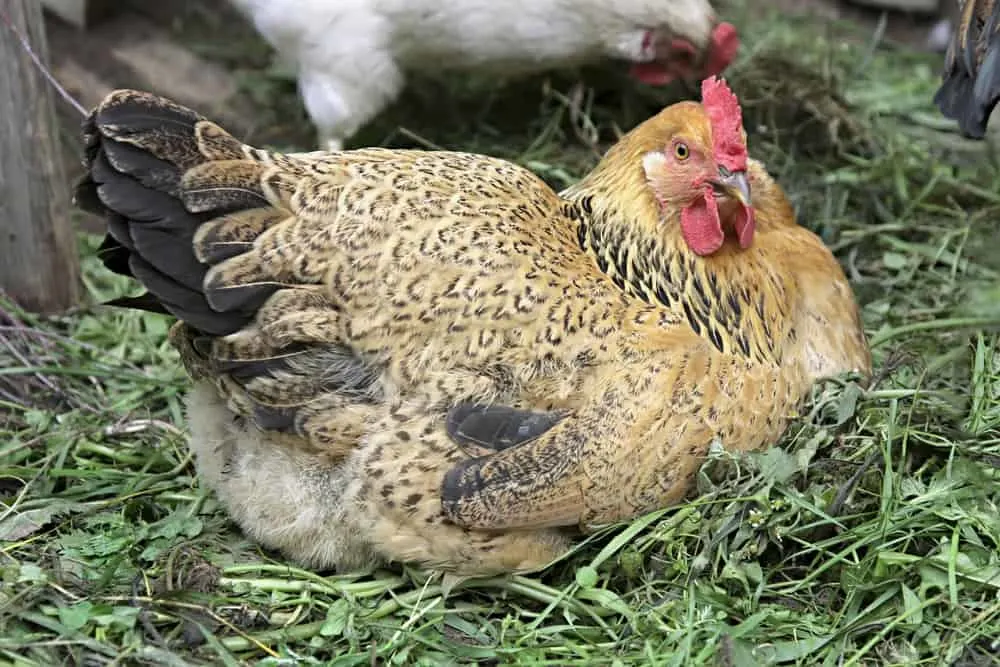
Broodiness is another reason hens stop laying eggs, and if you have hens that frequently go broody, you’ll be missing out on a lot of eggs.
Broody hens are those that are trying to hatch the eggs they’ve laid. They will sit on the nest incubating the eggs for 20 plus hours per day. Broody hens don’t lay eggs for the entire time they’re broody, and if they succeed in hatching chicks, they won’t start laying until the chicks are grown.
Some hens go broody several times a year, resulting in 4-6 months of no eggs!
If you avoid adding these breeds to your flock in the first place, you’ll be getting more eggs from your hens.
Most broody chicken breeds:
- Silkie
- Chentecler
- Cochin
- Sussex
- Orpington
- Marans
- Brahma
Breaking broodiness
Even if you do happen to have some broody breeds in your flock, not all hope is lost. There are ways to break hens of their broodiness and get them back to laying.
Remove the nest
Removing the broody hens favored nest sometimes works for breaking her broodiness. Broody hens are habit bound, and will return to the same nest over and over. If you take that nest away or block access to it, she may lose her desire to sit on eggs
Remove the hen
The other popular option of breaking a broody hen is to remove her from the nest. You can set her out to free range for the day and block access to the coop, or put her in another location until she stops brooding. Many chicken keepers find success with putting the broody in a well lit, cooler area with no bedding as this gets them out of the nesting instinct.
Let her hatch
On the other hand, allowing your broody hen to hatch and raise chicks will get her through her broodiness more quickly, and it will add some new chickens to your flock, which means more eggs once they grow up!
You can give a broody hen fertile eggs to incubate or you can try sneaking day old chicks under her and see if she’ll adopt them. Either way be sure to monitor the hen and the chicks closely to make sure they’ve bonded.
Once the broody hen has raised the chicks to maturity, she’ll return to laying regularly.
5. Check hens regularly for illness, parasites, and injury
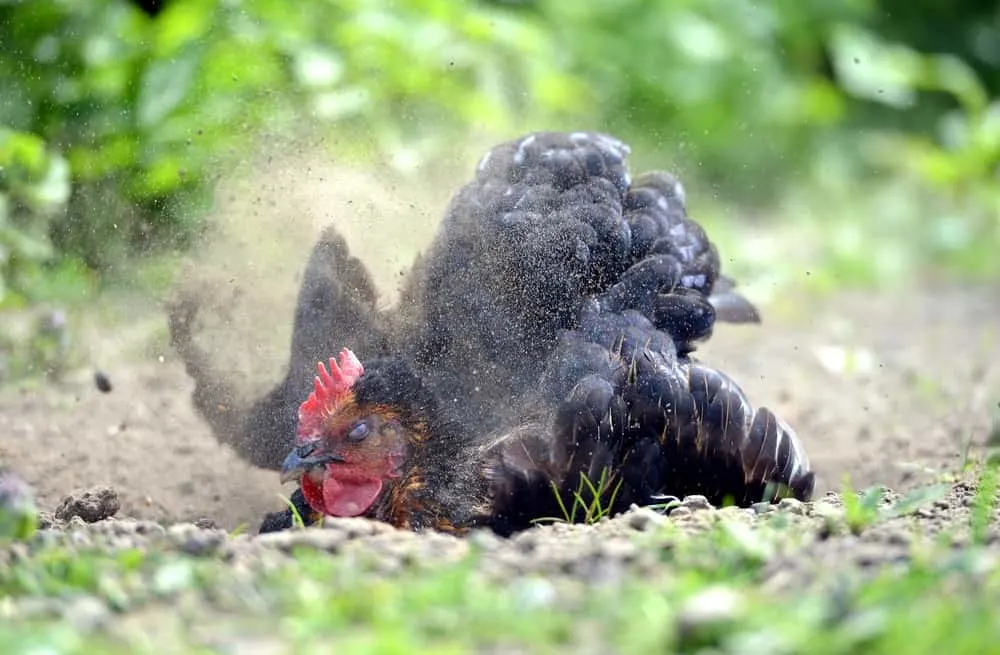
One of the biggest reasons you’ll see a decrease in egg production is because your chickens aren’t healthy enough to lay eggs.
Healthy laying hens will have clean, orderly feathers, bright eyes, red combs and wattles, and lots of energy.
Sickly hens will stop laying eggs while they heal their bodies. Keep an eye out for signs of problems and help your hens to heal quickly so they can return to laying eggs.
Signs of sick hens:
- Droopy tail
- Pale comb and wattles
- Limping
- Feather loss – particularly around the vent
- Discharge from the vent
- Excessive scratching and preening (sign of lice or mites)
- Hiding/isolating themselves
We suggest inspecting the whole flock at least once a month for any health issues.
6. Up the quality of their feed
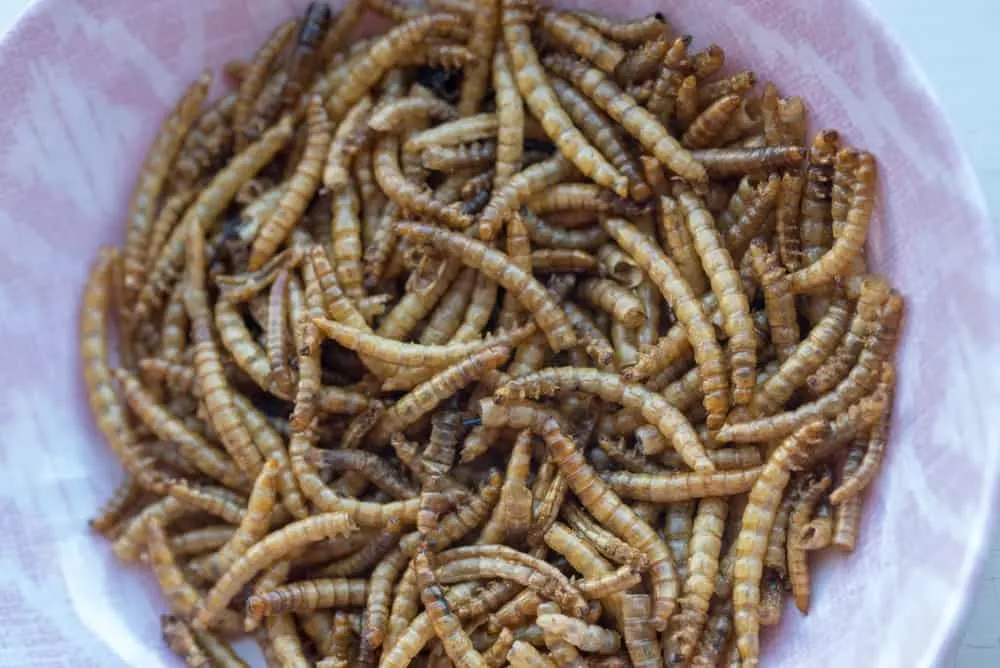
Hens need a careful balance of nutrition in order to regularly produce high quality eggs.
If your hens aren’t laying as much as you’d like, it might be time to look into their feed.
Splurging a bit on premium egg layer feed might be just what it takes to get your hens laying beautiful eggs on the regular.
We also recommend supplementing their feed with healthy treats, garden “weeds”, kitchen scraps, and supplements to ensure they get a well rounded diet.
Dried mealworms are a great addition to your flocks diet so get yourself a bag (this is the one we recommend) and throw a few handfuls on the ground. Your chickens will devour them in no time.
7. Reduce stress
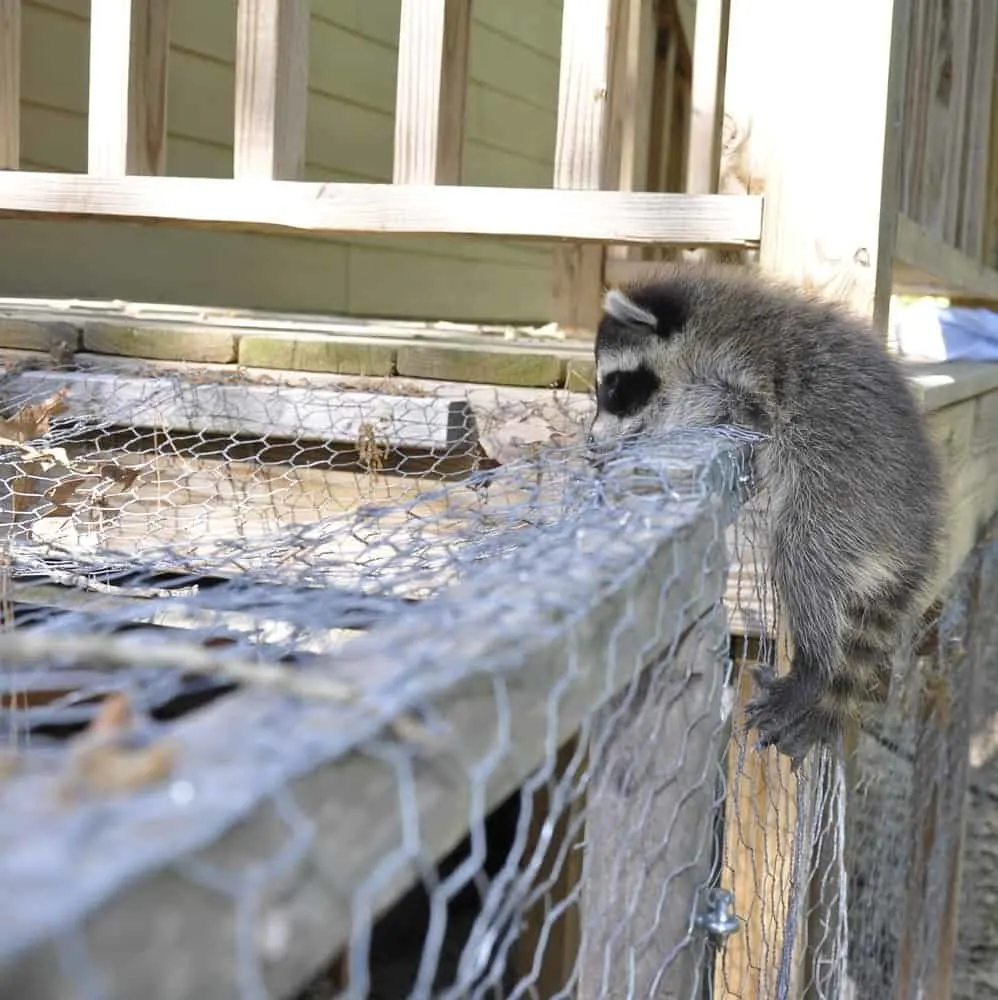
Stress plays a big role in egg production. A stressed hen simply won’t lay eggs. Reducing the amount of stress in your hens lives will have a big impact on egg amount and quality.
Common chicken stressors:
- Predators lurking around or in the coop and run
- Parasites like mites and lice tormenting the chickens
- Nearby dogs or cats stalking the hens
- Introducing new chickens to the flock
- Moving to a new coop or re-arranging the coop
- Chickens bullying each other
- Flies in the chicken coop – here’s how to get rid of them
This time of year can be tough for egg production, but with these tips you and your flock should be able to get through it with your omelets still intact!
Pin This To Save For Later
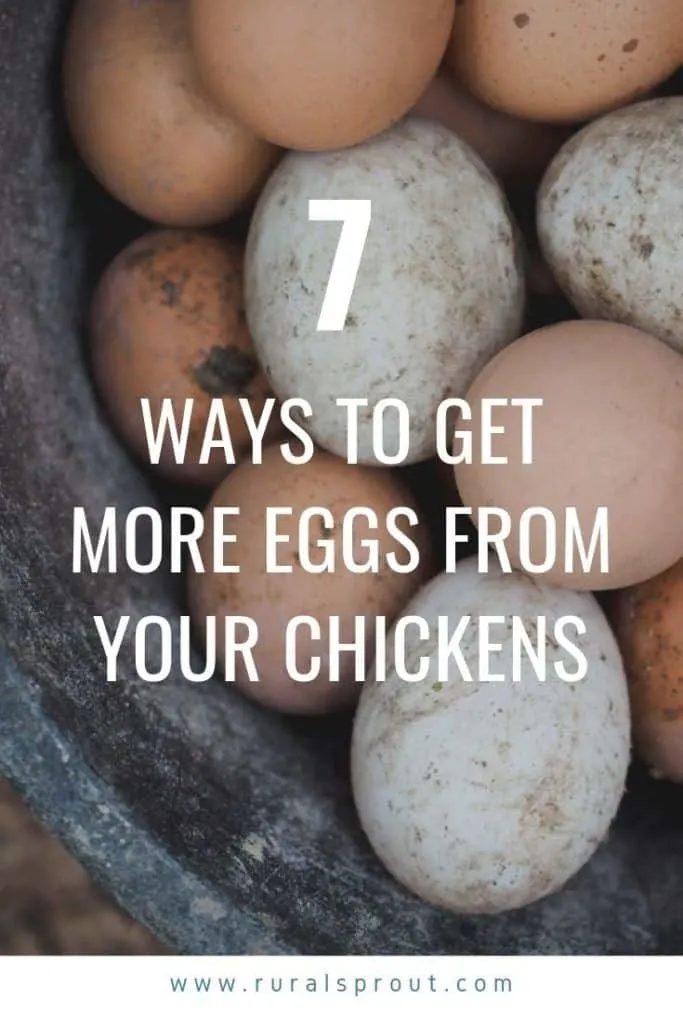
Read Next: 10 Things Nobody Tells You About Raising Chickens

Get the famous Rural Sprout newsletter delivered to your inbox.
Including Sunday musings from our editor, Tracey, as well as “What’s Up Wednesday” our roundup of what’s in season and new article updates and alerts.


